The 'Basilique du Sacre Coeur de Montmartre' which dominates the skyline in the north of Paris is one of the most popular tourist attractions in the city and is undeniably impressive, especially when floodlit at night. While the Romano-Byzantine architectural features used in Paul Abadie's design suggest it could be much older, building started in 1875 and it was not completed until 1914 (though following the outbreak of the First World War, was not consecrated until 1919). The 'hill of the martyrs' was used as a site of worship by the Druids of ancient Gaul as well as the Romans and was documented as the site of the marytrdom of Saint Denis the first bishop of Paris in a history of the life of Saint Genevieve in 475AD. The last of several earlier churches had been destroyed a hundred years earlier following the French Revolution and the new basilica was commissioned following a 'vow of reparation' instigated by the Society of Saint Vincent de Paul, following the defeat of France in the Franco-Prussian war of 1870 with subsequent occupation by the German Army.For my trip to Paris Photo, the 'most affordable' hotel I could find within walking distance of the Gare du Nord, happened to be around the corner from where I made the photograph of Sacre Coeur above, in the Butte de Montmartre (the area around the bottom of the steps leading up to the Basilica). My first impression, that this was not one of the more well maintained parts of the city, was confirmed the following morning, when I opened the curtains of my room in the ironically named Hotel Bellevue.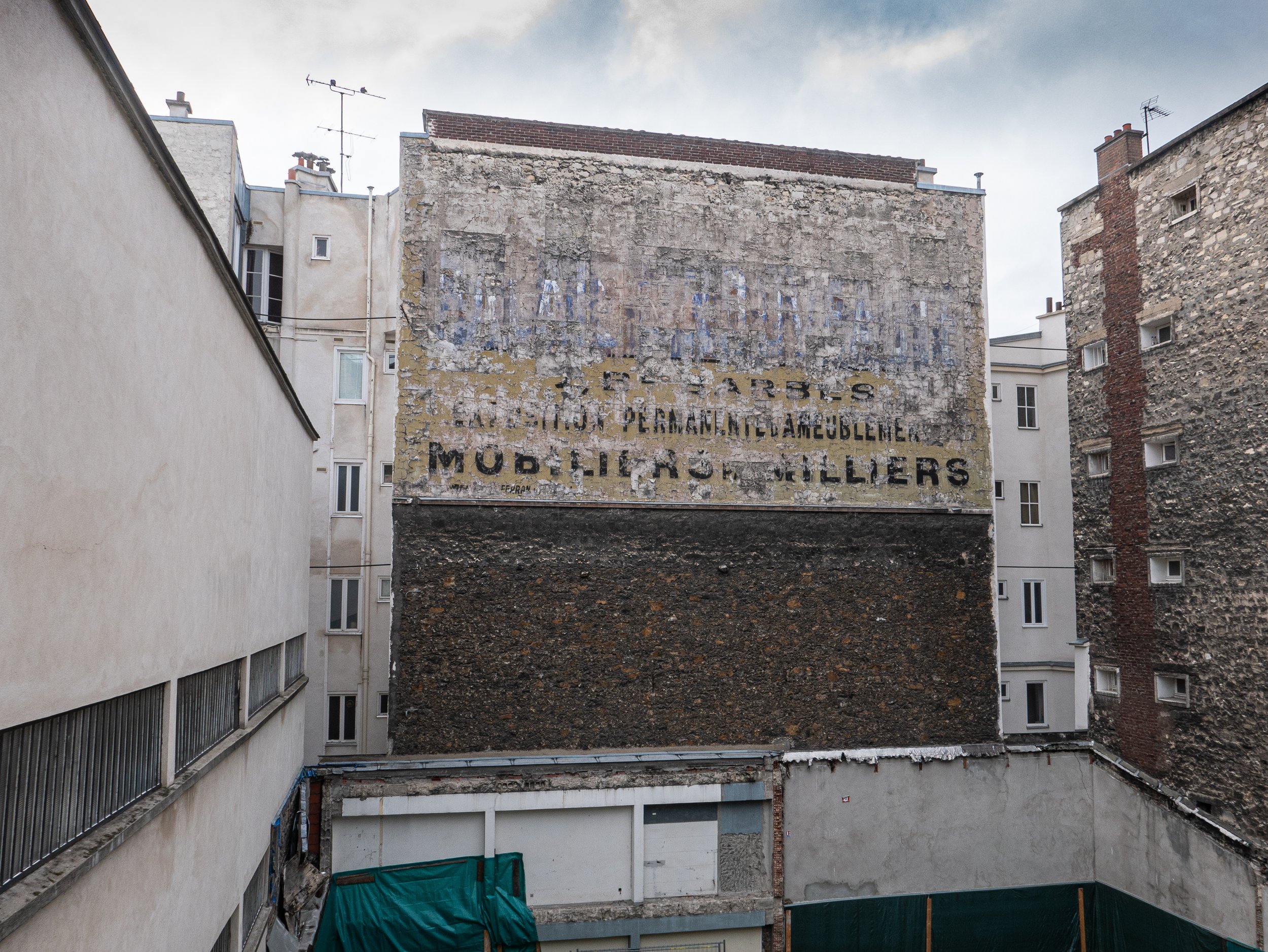 Unfortunately I did not have time to explore the more gentrified areas of Montmartre and did not get to the famous cemetery where several of the artists and poets who lived here are buried. There was however plenty to photograph in the narrow streets around the hotel, mainly cafes, restaurants, shops selling tatty tourist souvenirs and for some reason, all sorts of fabrics, most of which appeared to have been sourced from the middle east.
Unfortunately I did not have time to explore the more gentrified areas of Montmartre and did not get to the famous cemetery where several of the artists and poets who lived here are buried. There was however plenty to photograph in the narrow streets around the hotel, mainly cafes, restaurants, shops selling tatty tourist souvenirs and for some reason, all sorts of fabrics, most of which appeared to have been sourced from the middle east.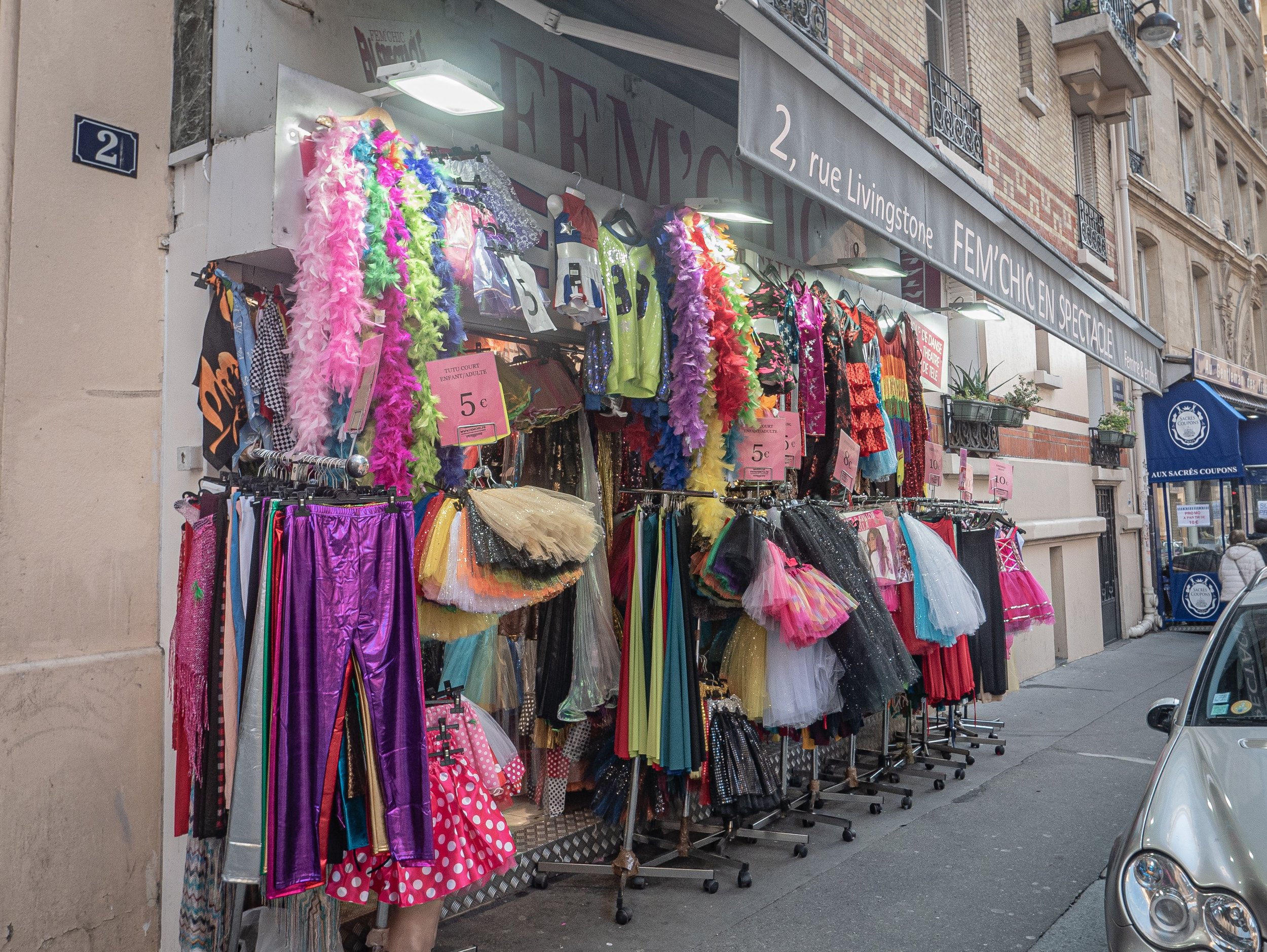
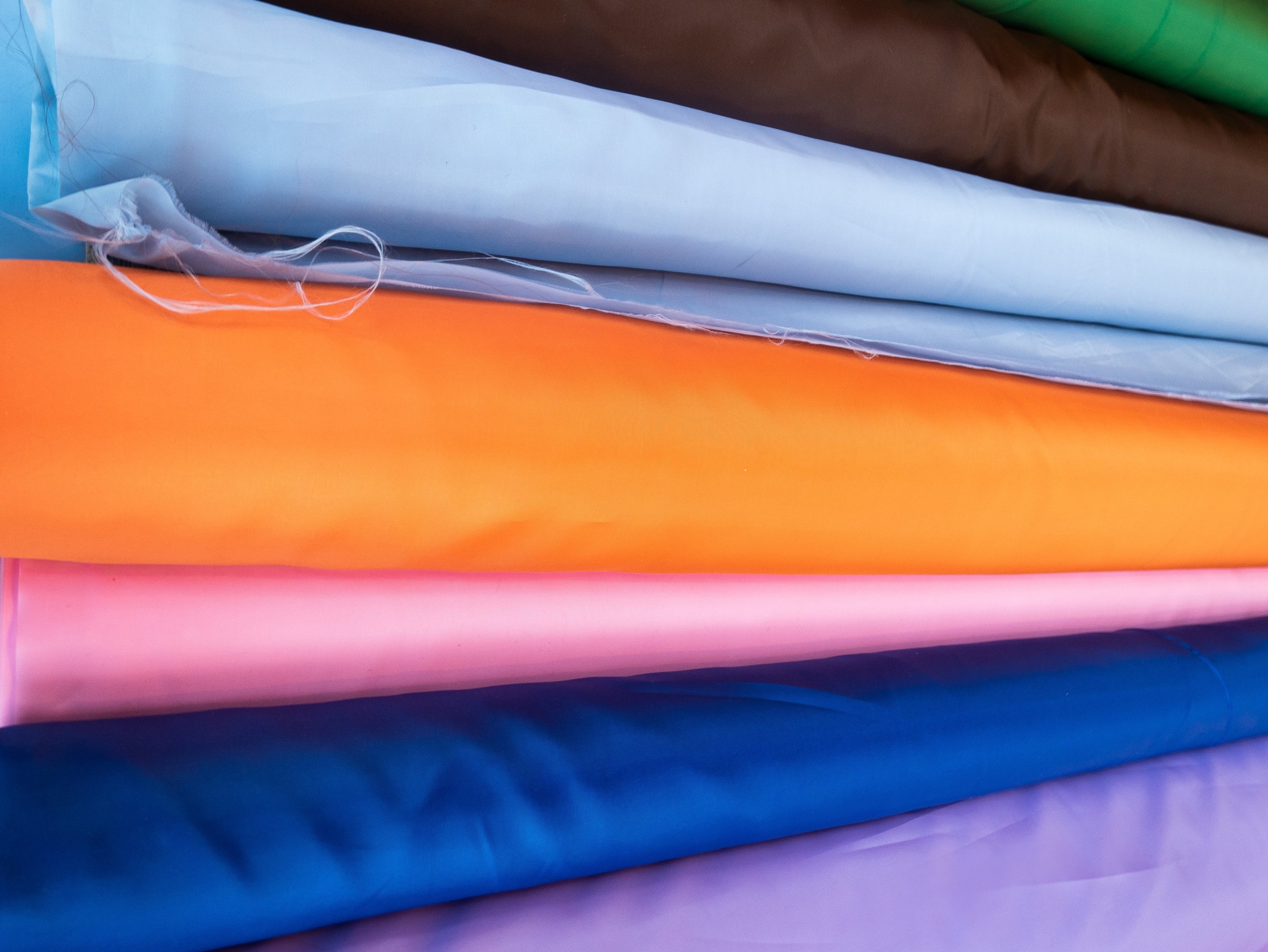
 The area appears to have been undergoing extensive change and the streets are starting in places to look quite shabby with a lot of graffiti - one of the few things that perhaps point to the area having an artistic heritage.
The area appears to have been undergoing extensive change and the streets are starting in places to look quite shabby with a lot of graffiti - one of the few things that perhaps point to the area having an artistic heritage.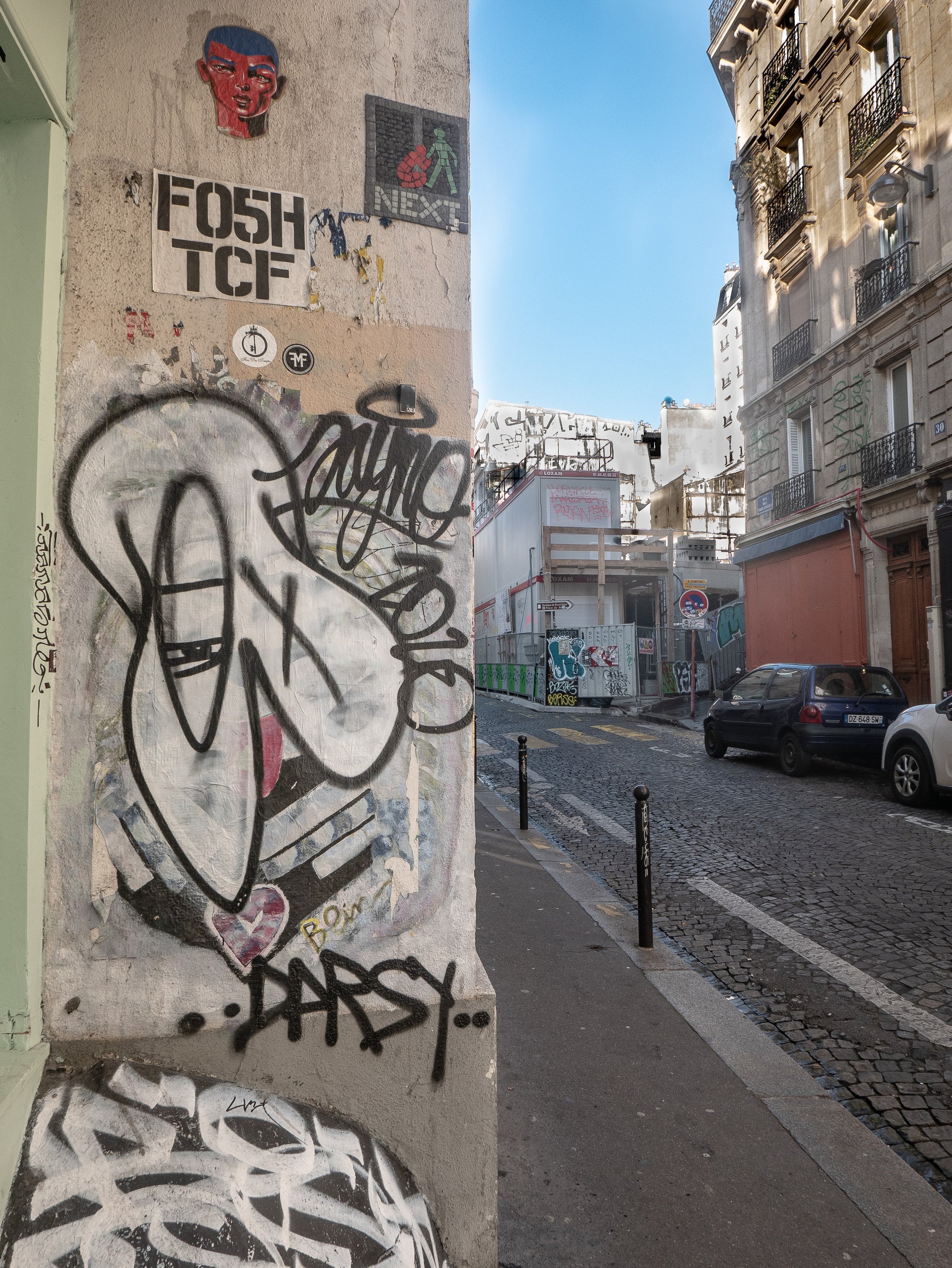
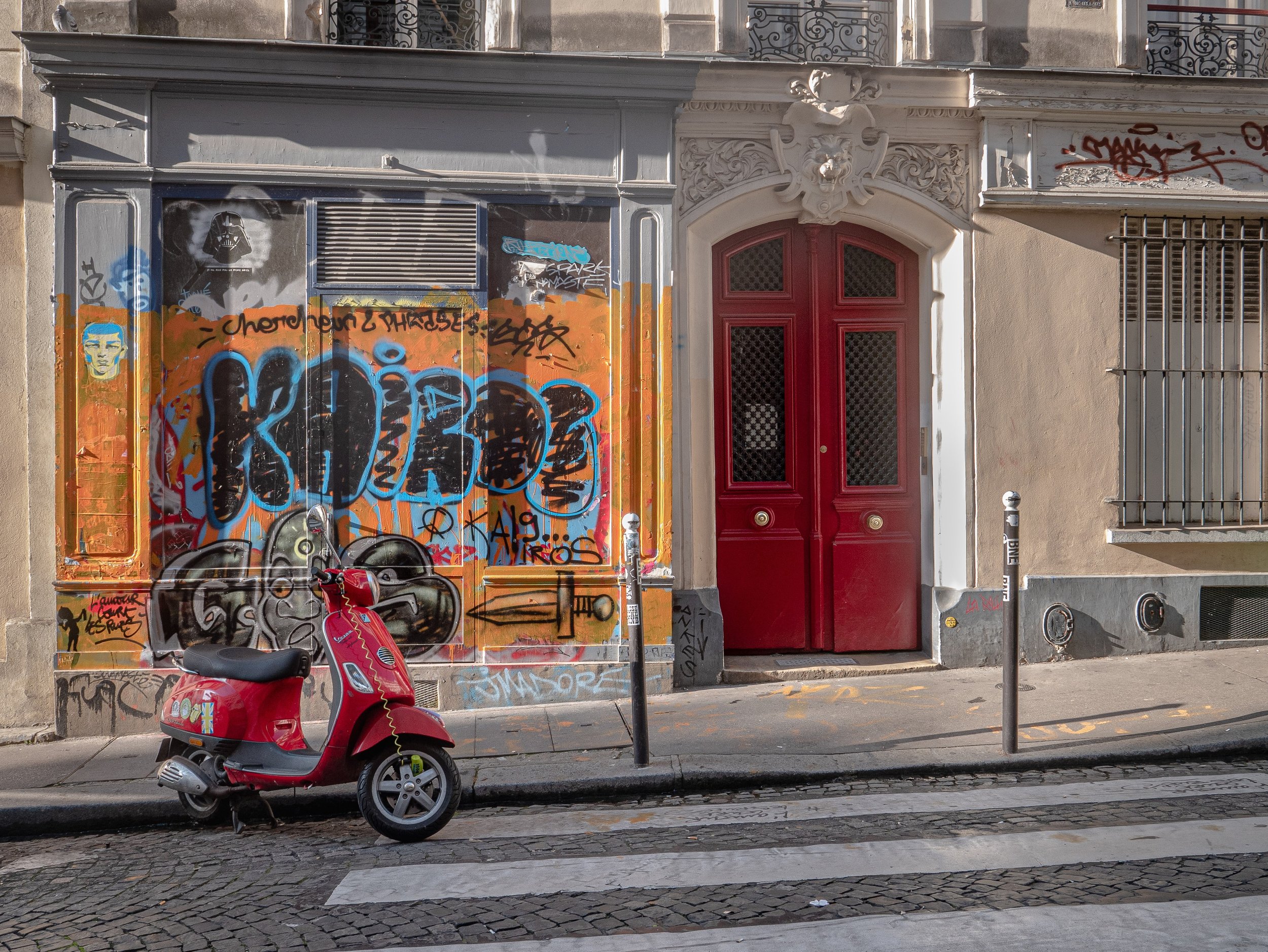 In the daytime the steps leading up to Sacre Coeur quickly get very crowded, negating any sense of reverence for a site created for the purpose of religious devotion. This is exacerbated by the number of unlicensed street vendors trying to make a living by selling any number of cheap shiny plastic trinkets, predominantly Eiffel Towers and religious statuettes. The wider terraces are also populated with acrobatic breakdancing buskers using portable amplifiers and beat-boxes, a potential magnet for pick-pockets.
In the daytime the steps leading up to Sacre Coeur quickly get very crowded, negating any sense of reverence for a site created for the purpose of religious devotion. This is exacerbated by the number of unlicensed street vendors trying to make a living by selling any number of cheap shiny plastic trinkets, predominantly Eiffel Towers and religious statuettes. The wider terraces are also populated with acrobatic breakdancing buskers using portable amplifiers and beat-boxes, a potential magnet for pick-pockets.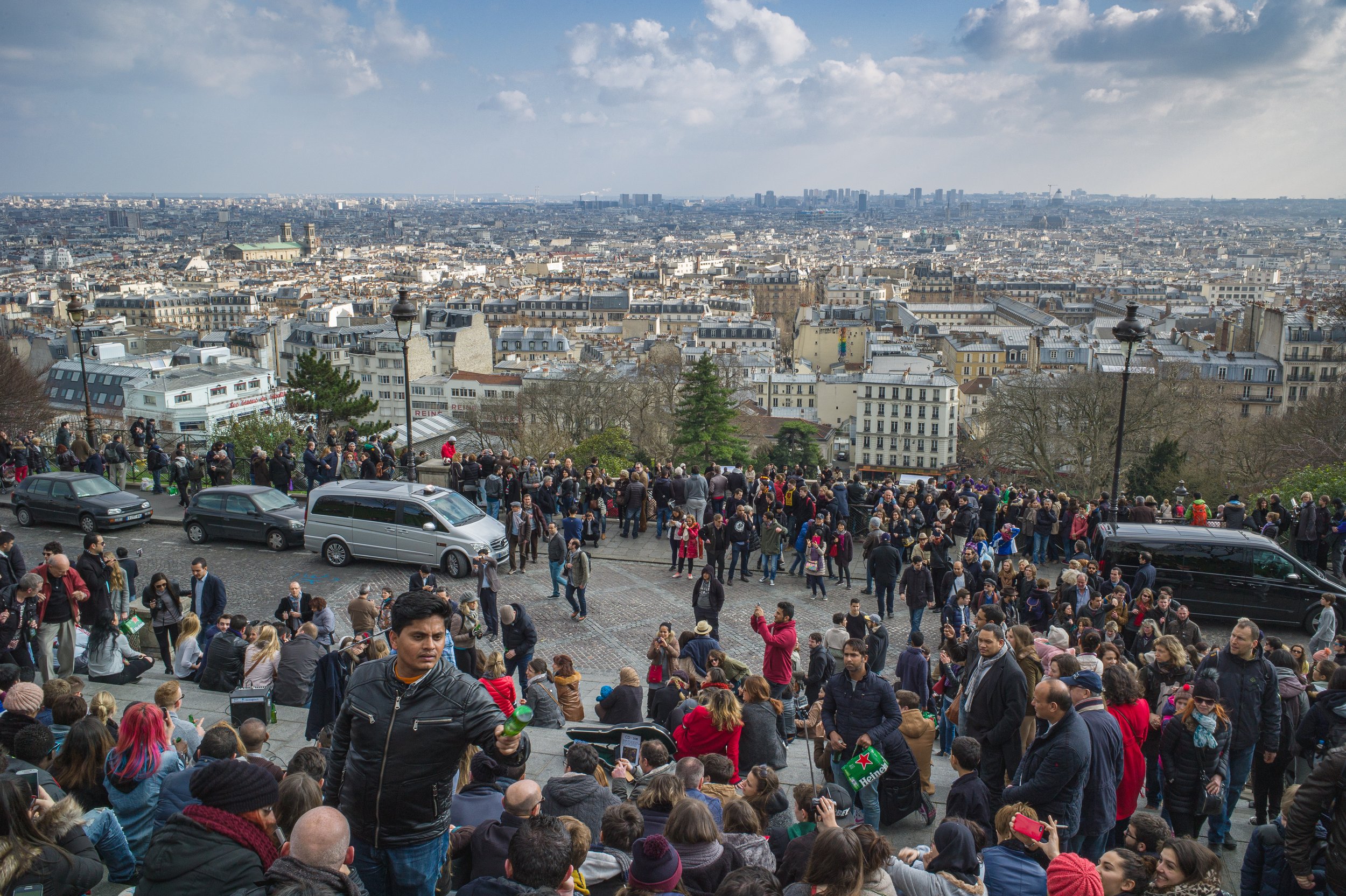
 In recent years, civil unrest and anti-government protests have featured prominently in news reports from France and the 'gilets jaunes' were in the process of setting up a small demonstration when I arrived, closely observed from a discrete distance by the police.
In recent years, civil unrest and anti-government protests have featured prominently in news reports from France and the 'gilets jaunes' were in the process of setting up a small demonstration when I arrived, closely observed from a discrete distance by the police.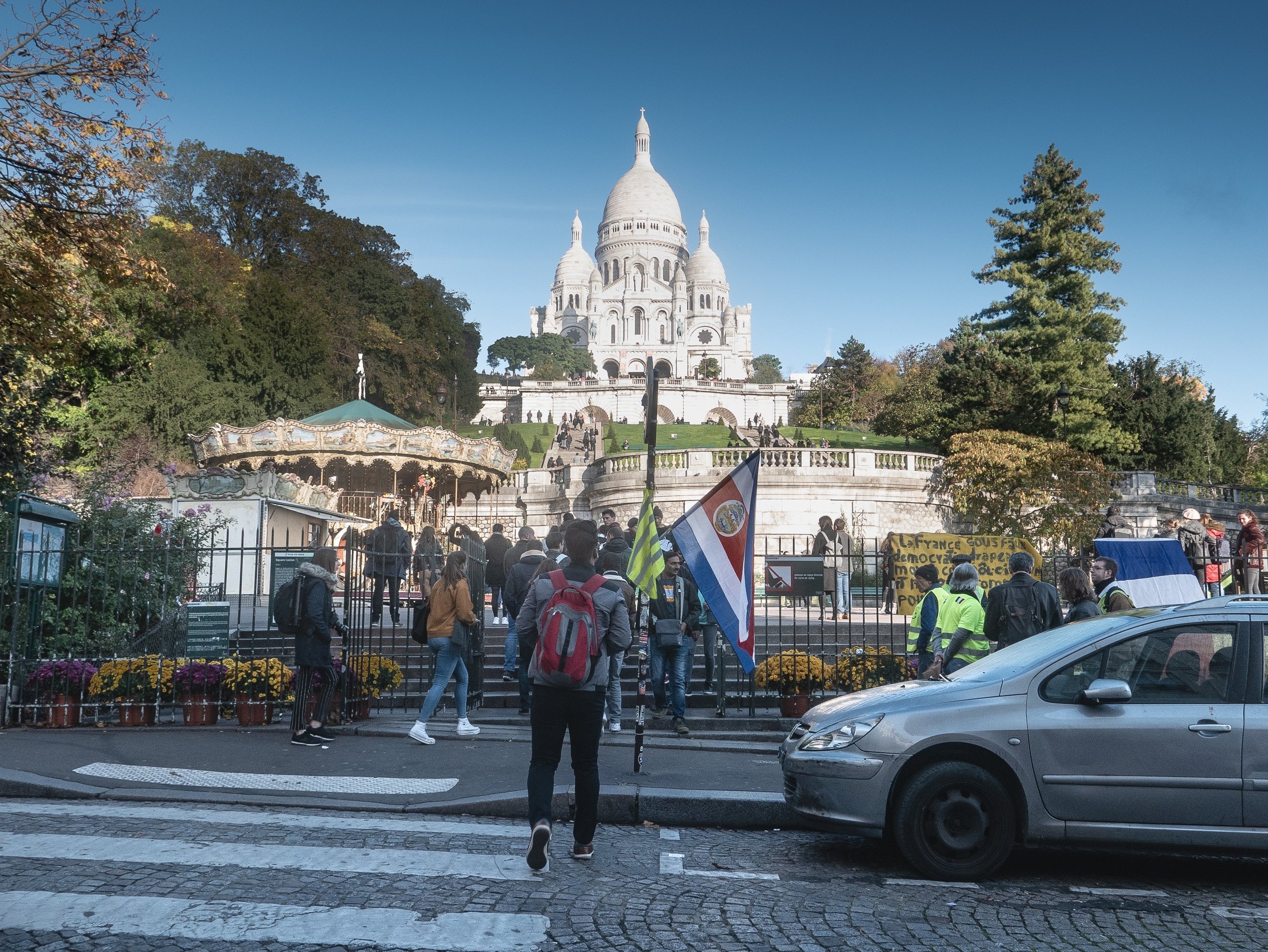
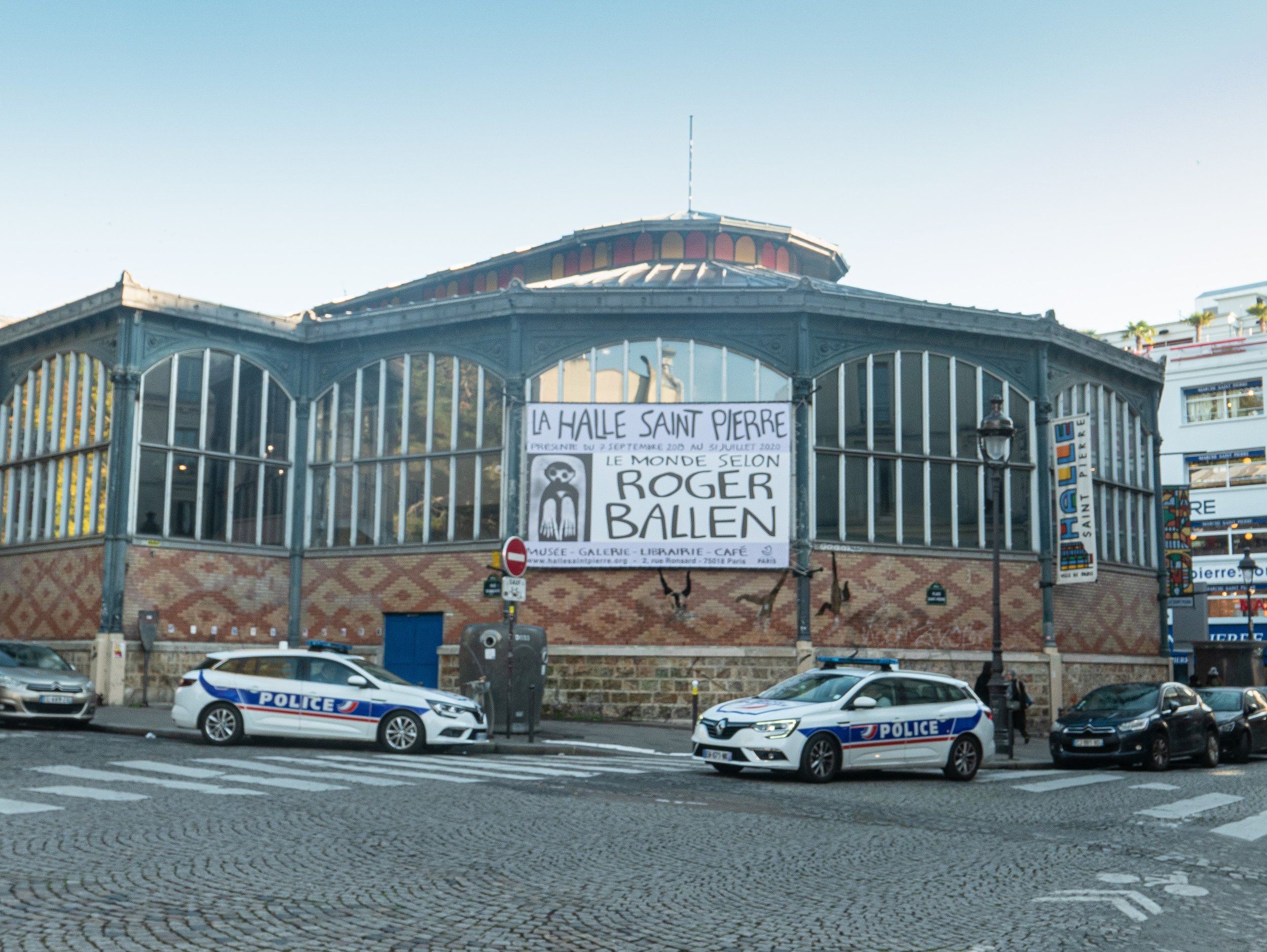 That was when by pure chance, I arrived at the Halle Saint Pierre with a sign for an exhibition of photographs and artworks by Roger Ballen and I knew then what I was going to be doing for the rest of the morning.http://www.sacre-coeur-montmartre.com/english/
That was when by pure chance, I arrived at the Halle Saint Pierre with a sign for an exhibition of photographs and artworks by Roger Ballen and I knew then what I was going to be doing for the rest of the morning.http://www.sacre-coeur-montmartre.com/english/
Return to Manchester : Martin Parr
This exhibition currently showing at Manchester Art Gallery focuses on Martin Parr's long term engagement with the people of the city and the surrounding industrial towns of the North West, which form the region of Greater Manchester. From his first student projects in 1970, over a period of nearly fifty years, he has returned regularly and his work now constitutes a substantial documentary record of the changes in the fabric of city's buildings along with its' cultural and social development from an industrial region to modern twenty-first century metropolis.By concentrating on the lives of the inhabitants he has recorded the effects of on one hand, the social deprivation resulting from de-industrialization and on the other, the gentrification of parts of the city, which closely mirrors the changes seen in other major UK cities. The thread which runs through these projects is his ability to capture the warmth and resilience of the people he photographed along the way, especially those from the working class areas.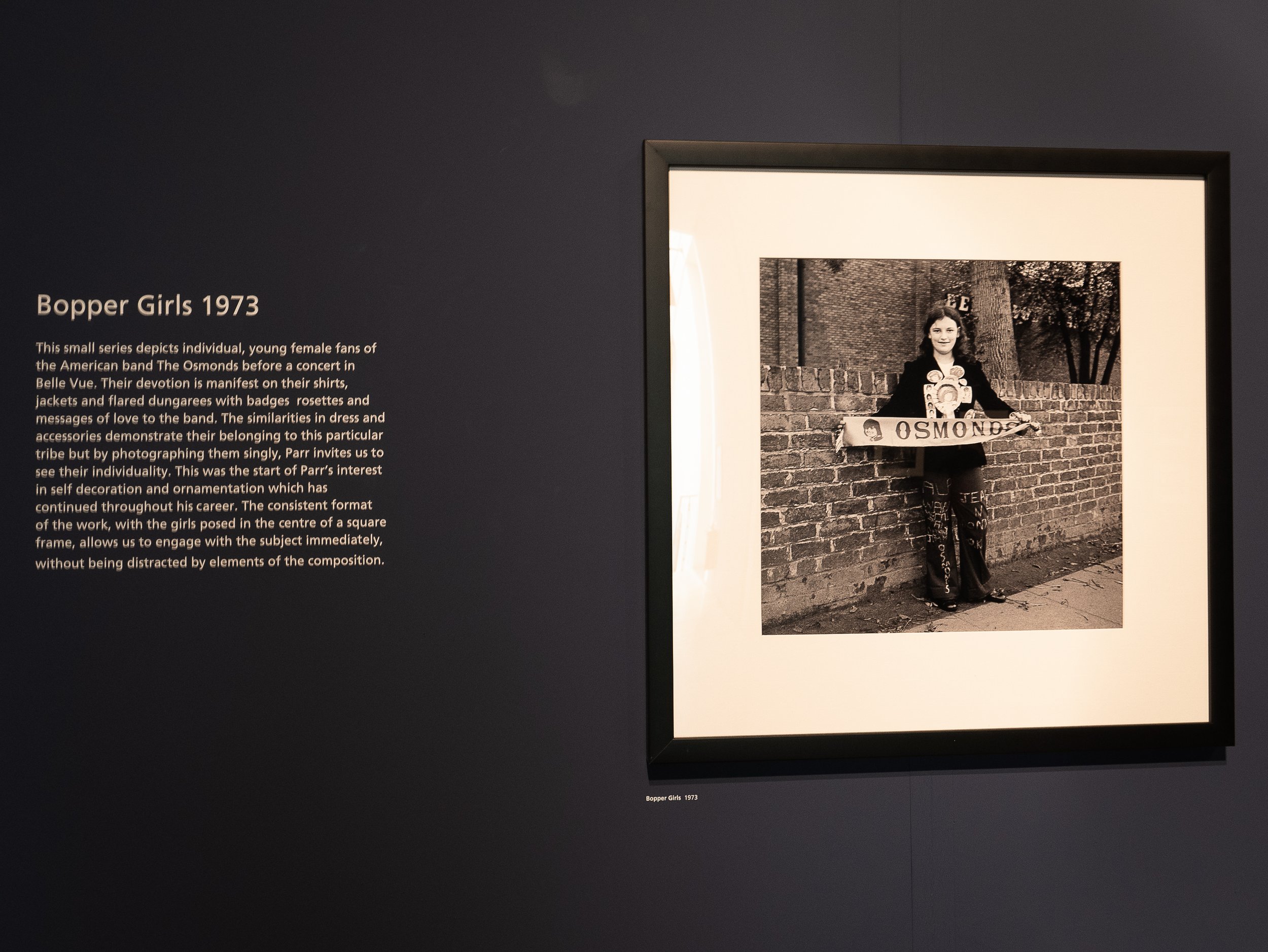 His early black and white photographs are still resonant of the times they covered. His series from the psychiatric hospital in Prestwich are especially poignant and his medium format photographs of girl 'teenyboppers’ manage to capture a sense of the personalities of the teenagers as well as the period detail of their clothing. The layout of the exhibition seamlessly follows his switch to working in colour in the early 1980’s, making the change appear to fit logically with the ways in which that period is now usually remembered (colour in television screens, magazines and newspaper supplements, at that time becoming the norm). The colours recorded in the details of people's everyday lives; shop windows, home decor, clothing, are particularly resonant of the times.
His early black and white photographs are still resonant of the times they covered. His series from the psychiatric hospital in Prestwich are especially poignant and his medium format photographs of girl 'teenyboppers’ manage to capture a sense of the personalities of the teenagers as well as the period detail of their clothing. The layout of the exhibition seamlessly follows his switch to working in colour in the early 1980’s, making the change appear to fit logically with the ways in which that period is now usually remembered (colour in television screens, magazines and newspaper supplements, at that time becoming the norm). The colours recorded in the details of people's everyday lives; shop windows, home decor, clothing, are particularly resonant of the times.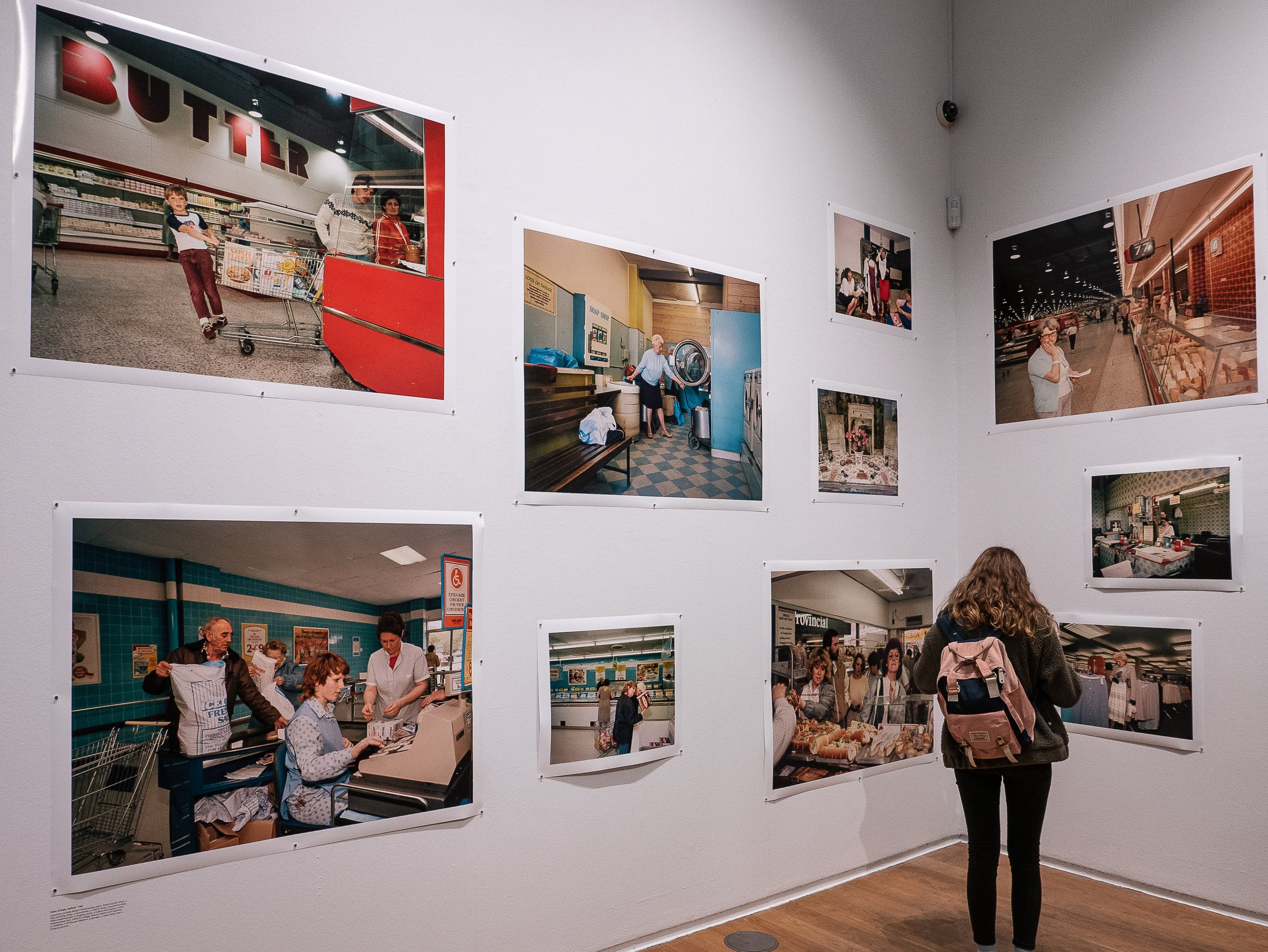 More than a few contemporary photographers (including myself) have commented that they find his more recent digital colour images less easy to relate to, which seems difficult to comprehend given that his working methods and subject matter have not significantly changed and the colours and clarity of detail in the images are if anything truer to life. Perhaps now we already know his work so well that there are now simply fewer surprises or the use of digital capture somehow lacks the resonance we felt looking at the earlier work with analogue materials. Alternatively could it be that these images are too close to what we see around us and in the media every day - does familiarity breed contempt? Perhaps if we are still here, we might respond to them more positively in another twenty years time.http://manchesterartgallery.org/exhibitions-and-events/exhibition/martin-parr/
More than a few contemporary photographers (including myself) have commented that they find his more recent digital colour images less easy to relate to, which seems difficult to comprehend given that his working methods and subject matter have not significantly changed and the colours and clarity of detail in the images are if anything truer to life. Perhaps now we already know his work so well that there are now simply fewer surprises or the use of digital capture somehow lacks the resonance we felt looking at the earlier work with analogue materials. Alternatively could it be that these images are too close to what we see around us and in the media every day - does familiarity breed contempt? Perhaps if we are still here, we might respond to them more positively in another twenty years time.http://manchesterartgallery.org/exhibitions-and-events/exhibition/martin-parr/
The Photographers' Gallery, London
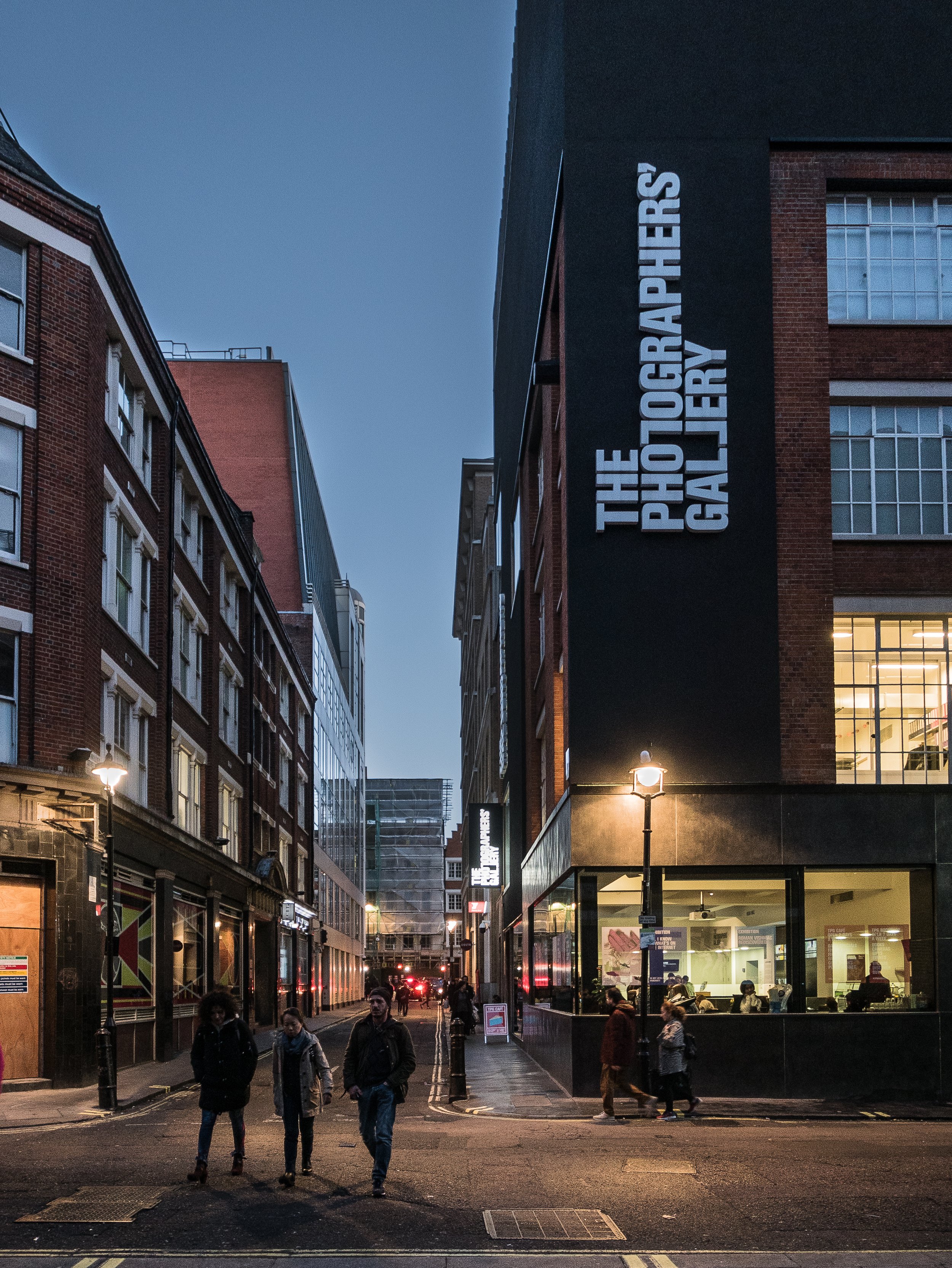 While in London last month I also visited the Photographers' Gallery where the two current exhibitions on show are 'Roman Vishniac Rediscovered' (in collaboration with the Jewish Museum of London) and 'All I Know is What's on the Internet' (a quote from Donald Trump). I will consider the second of these in a separate blog.
While in London last month I also visited the Photographers' Gallery where the two current exhibitions on show are 'Roman Vishniac Rediscovered' (in collaboration with the Jewish Museum of London) and 'All I Know is What's on the Internet' (a quote from Donald Trump). I will consider the second of these in a separate blog.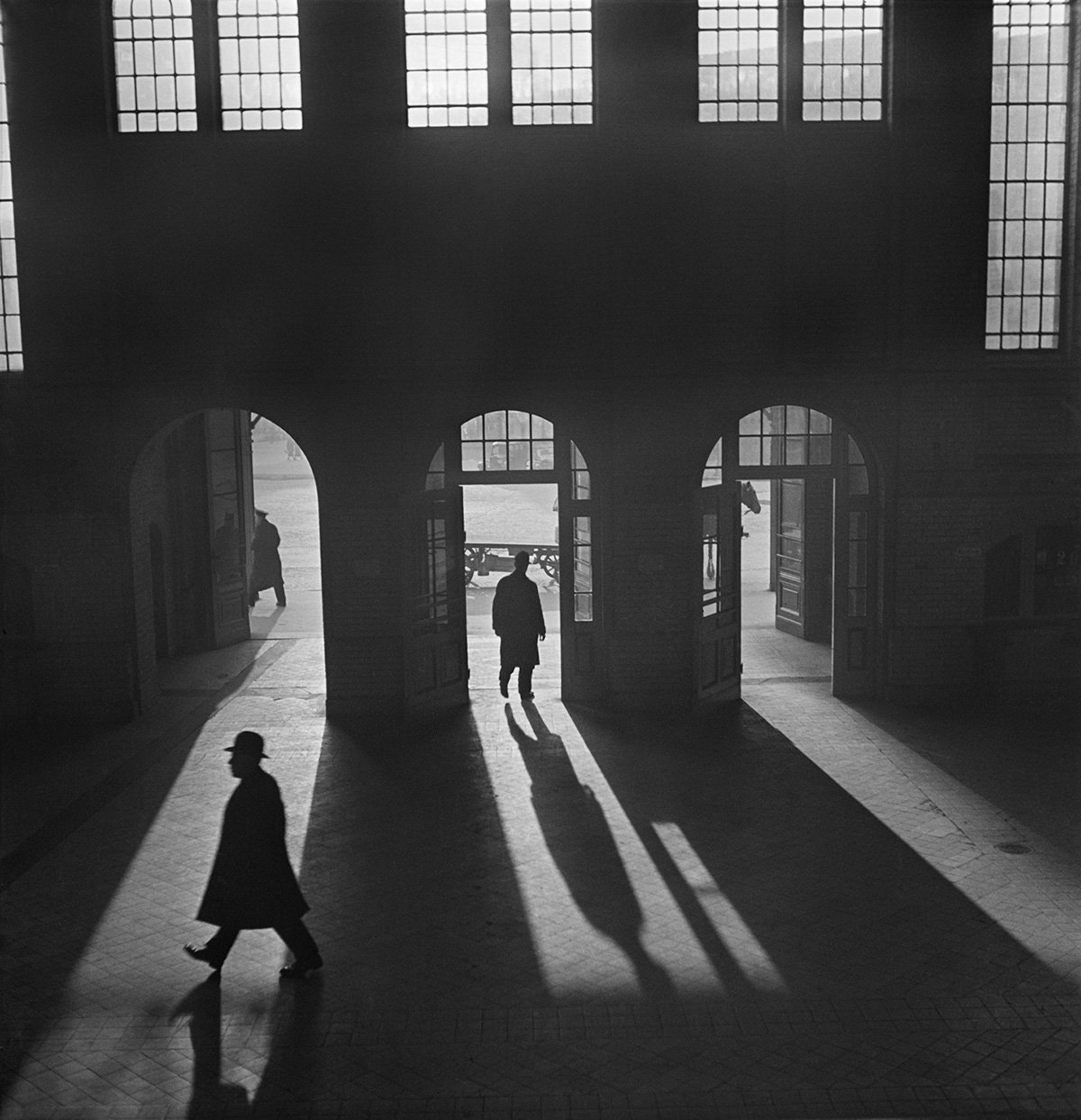 The larger exhibition, on Levels 4 and 5 of the gallery is an extensive retrospective of the Russian born American photographer Roman Vishniac (1897-1990). Vishniac had moved from Moscow to Berlin to escape the aftermath of the Russian Revolution in 1920 and his best known body of work is a large social documentary portrait of the Jewish population of Eastern Europe, mainly Berlin and Warsaw in the inter-war years, coinciding with the evolution of modernism and the rise of fascism with the resultant persecution of these communities. It is a unique document of the dramatic changes in these societies from a atmosphere open to artistic expression and social multiculturalism to the sectarianism and oppression of the Nazi regime and the populations decimated by their policies.The layout of most of the exhibition is a traditional wall mounted chronological sequence of very fine vintage (and some newly re-printed) monochrome prints, including studio and candid portraits as well as street photography and images of agricultural workers. On escaping from Germany in the mid-1930's, he moved to the USA and quickly established a successful commercial portrait studio. His other interest was the photography of microscopic life forms and his pioneering work in colour photomicrography led to an academic career and professorships in biology and fine art photography in several American universities - a selection of these images were presented in a separate room from the main exhibition as a projected slide show along with several of his publications displayed in glass cases.The quality of his work is very impressive and the social documentary work is genuinely moving but aside from this and his imaginative use of atmospheric shadows, the relevance to my own current practice is of limited relevance.www.thephotographersgallery.org/whats-on/exhibition/roman-vishniac-rediscovered
The larger exhibition, on Levels 4 and 5 of the gallery is an extensive retrospective of the Russian born American photographer Roman Vishniac (1897-1990). Vishniac had moved from Moscow to Berlin to escape the aftermath of the Russian Revolution in 1920 and his best known body of work is a large social documentary portrait of the Jewish population of Eastern Europe, mainly Berlin and Warsaw in the inter-war years, coinciding with the evolution of modernism and the rise of fascism with the resultant persecution of these communities. It is a unique document of the dramatic changes in these societies from a atmosphere open to artistic expression and social multiculturalism to the sectarianism and oppression of the Nazi regime and the populations decimated by their policies.The layout of most of the exhibition is a traditional wall mounted chronological sequence of very fine vintage (and some newly re-printed) monochrome prints, including studio and candid portraits as well as street photography and images of agricultural workers. On escaping from Germany in the mid-1930's, he moved to the USA and quickly established a successful commercial portrait studio. His other interest was the photography of microscopic life forms and his pioneering work in colour photomicrography led to an academic career and professorships in biology and fine art photography in several American universities - a selection of these images were presented in a separate room from the main exhibition as a projected slide show along with several of his publications displayed in glass cases.The quality of his work is very impressive and the social documentary work is genuinely moving but aside from this and his imaginative use of atmospheric shadows, the relevance to my own current practice is of limited relevance.www.thephotographersgallery.org/whats-on/exhibition/roman-vishniac-rediscovered

